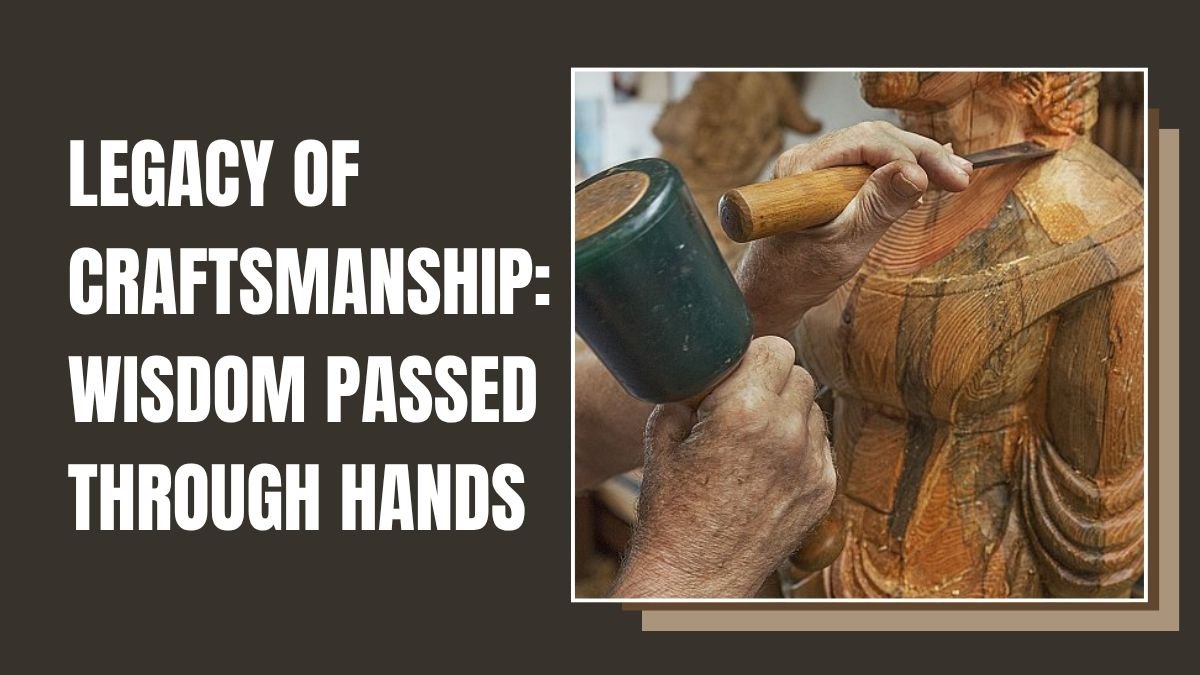I have been thinking of writing about this topic for a long time—handsmanship. It is the subject on which I have built my entire professional life. One might think that this topic would be of interest to anyone who likes to work with their hands, but its scope is much deeper than that. In this article I am not just talking about ‘craftsmanship’—but about the invisible, spiritual and physical skills that lie behind these arts.
Craftsmanship and Handsmanship: Same But Different
The term ‘craftsmanship’ usually refers to the concrete result of a particular product or service—something that someone has created with care, skill and dedication. This is the more socially visible side: the object that people see. But ‘handsmanship’ is much more personal and internal than that. It is what resides within the artist or craftsman—his eye-hand coordination, his experienced muscles, his sensitivity, his imagination, his sense of timing and his inner sense of aesthetics. All these things are transferred to the object he makes, but their true form resides within the craftsman.
My Journey: Wood, Tools and Soul
I am a woodworker myself. So when I say ‘hand skills,’ I mean traditional carpentry tools such as chisels, sanders, hand saws, planes, pencils, sketchbooks, and modern power tools such as sanders, bandsaws, routers, drills, table saws and presses. The difference is that I don’t use machines that do the same thing by pressing a button over and over again. Every tool of mine is controlled by my hands—where my speed, strength, judgment and imagination are involved.
Lutherie: Not by machines, but by heart
I make guitars the traditional way. I make every part of my instrument myself, not by machines. CNC machines are being widely used in this field these days, but I stay away from the process. As I have grown older, I have started to look at this work from a long-term perspective. And, frankly, this view is not very encouraging.
Modern society and neglect of hands
Every few years it seems that modern society is losing the need for traditional hand skills. The goal of ‘minimizing time’ to make a product has become primary. Whether it is agriculture, chemistry, electronics or any field—everywhere the principle of ‘as quickly as possible’ has marginalized handicrafts. Today’s ‘do-it-yourself’ is also largely based on the thinking of ‘get it done by someone else.’ This is a social and cultural crisis—one that may seem small but is actually so massive that we are unable to see it.
The Changing Landscape: Markets, Education, and the Value of Hands
A 2012 New York Times article described how handwork was disappearing from factories. Tools and equipment were now available to market that could make even a non-skilled person “look skilled.” This may seem convenient on the surface, but in the long run it destroys the “value of skill.” Vocational education has collapsed in the US, while countries like Canada and Germany provide economic and institutional support to their craftsmen.
Economic Data and Social Reality
If we look at the data, 50 years ago the manufacturing sector contributed 30% to the US GDP and employed one-third of the people. Today these figures have come down to 12% and 9%, respectively. Meanwhile, real estate, banking and financial services now account for 21% of incomes—up from just 10% in 1950. This change is not just economic—it shapes how billions of people live, think, and value what they do.
Conclusion: Is handcraft disappearing?
Maybe not, but there are very few people left to preserve it. And most of them are now migrants, minorities, or people from traditional societies—whose hands still have blisters and whose hearts still have a flame of self-esteem. My aim with this article is not just to preserve an art but to keep alive the thought, the spirit that says, “We can create something with our hands—beautiful, meaningful, and lasting.”
If we want self-reliance, sensitivity, and skill to remain in the next generation, we must bring the ‘handcraft’ back to the center. It is not just a question of economic but also cultural and moral revival.
